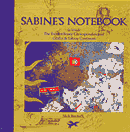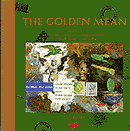I have just finished reading Nick Bantock's mystical Griffin and Sabine series about two artists who carry out a spacial correspondence and relationship. I had though the series was only three books, but just today learned that there are more, in the Morning Star trilogy! This makes me so very excited - I was happy with the ending of book three, but crave more!
A co-worker introduced me to this author after I saw the beautiful cover of a non-fiction book of his, Urgent 2nd class, which is about making things from ephemera. She recommended the Griffin and Sabine books. The art alone got me hooked.
The story of these two is told almost exclusively through their letters and postcards. The reader is more like a voyeur catching glances of their private thoughts as the mail passes through. It begins when Sabine finally gets the courage to send a postcard to Griffin, who lives in England halfway across the globe, to tell him that for years when he draws she can see through his eyes. No, this is NOT you average love story. They write back and forth and the mystical, psychic connection turns into a powerfully emotional one. But Griffin is troubled, and the reader is always a little unsure of whether both characters really exist, or if Griffin is just crazy. Plans to meet in person fall through and Griffin's mental health is, well, fragile. There are little notes of non-correspondence storytelling at the ends of the books, but the rest is through each character's point of view. The structure of this form makes the reader focus more on each word to try and decipher what is happening.
My favorite part of this series is the way in which Bantock tells the story. You have more depth and view than if it were from one person's, but are limited by not having the omnipotent angle. I love that he is re-thinking the concept of storytelling. When historians do research they look for 'primary sources,' and personal letters are often the important means of learning the stories of the past (history is just storytelling, in a way). Bantock applies this to fiction and fantasy. The artwork, too, is worth reading this series for. These two artists make their own postcards, and their letters and envelopes are also lavishly created in beautiful colors and images. He is so detailed that the handwriting is different, and even the artwork of each has its own character. You know who wrote each letter or postcard just by the style of it.
I highly recommend this series to anyone who loves ephemera, art, letters, or a good mystery. The books are short and can be gone through in a single sitting, but they leave a longer effect of almost childlike glee.



No comments:
Post a Comment